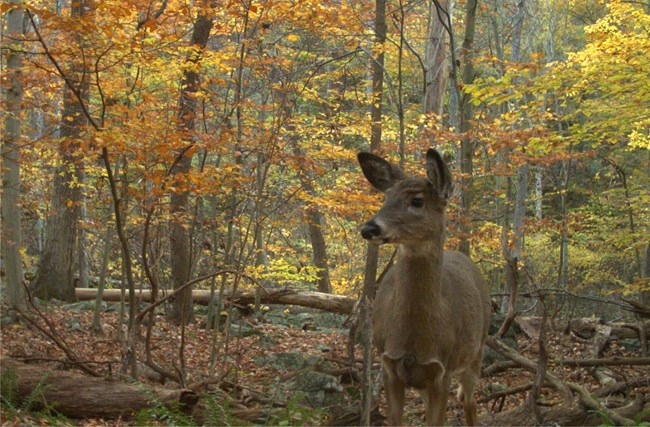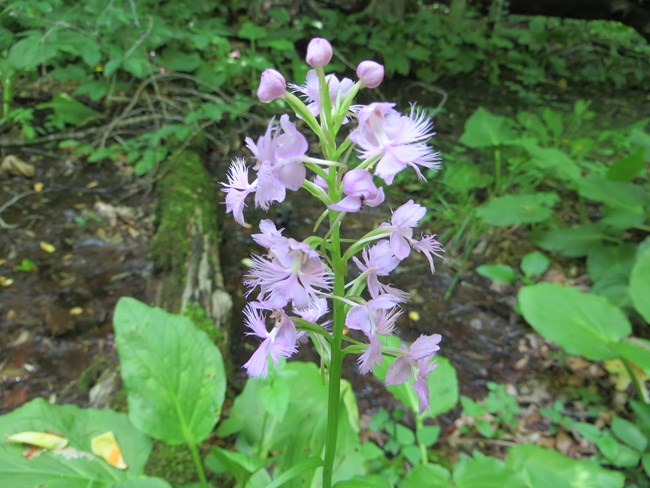
NPS - Catoctin Mountain Park Are there too many deer?Deer herds throughout the eastern United States were heavily exploited after the arrival of Europeans around 1600. In the early 1900's, deer populations began to increase due to a lack of predators and an increased availability of food and habitat. When Catoctin Mountain Park was established in 1936, much of the land was considered sub-marginal. The forest was decimated due to the removal of trees for charcoal and lumber, and white-tailed deer were few and far between. The protection that national park status brought to the land and the early efforts of the Civilian Conservation Corps to plant trees in the new park at a time when deer numbers were low allowed for a healthy forest to grow. As the forest grew healthier, food became more plentiful and the deer found refuge in the park since hunting was, and is, prohibited by law. Deer Management PlanCatoctin Mountain Park developed a Deer Management Plan/Environmental Impact Statement (EIS) that supports forest regeneration and provides for long-term protection, conservation, and restoration of native species and cultural landscapes. The selected alternative in the EIS calls for continuing current park deer and vegetation monitoring and research. In addition, it includes using qualified professionals to conduct lethal removal to reduce the deer population to the initial goal of 15-20 deer per square mile. This goal is based on recent research conducted in eastern deciduous forests similar to Catoctin's forest. Research has shown that vegetation damage occurs when deer populations exceed 20 per square mile. The park held three public meetings from 2004-2007 to gather comments on alternatives that were being considered and the draft plan. The final EIS was signed by the NPS National Capital Regional Director in April 2009. Deer Management BeginsPark staff implemented the first season of deer management operations in February 2010. Extensive safety measures were put in place to protect park visitors and neighbors during the operations. Operations were conducted mostly at night, when the park was closed to visitors. During daytime operations, roads and trails were intermittently closed and clearly marked and bait was used to attract deer to safe shooting locations. 
NPS Catoctin Mountain Park Success StoriesCatoctin Mountain Park's deer population was roughly 123 deer per square mile in the fall of 2009, before the first season of deer management. The density of the deer population had led to a decline in the number of tree seedlings and saplings in the forest understory, threatening the long-term viability of the forest itself. 2009 to 2022 Comparison 

Left image
Right image
Current statusThe goal of deer management is to allow for successful forest regeneration within the park. While vegetation monitoring is so far showing progress each year, the vegetation goals set in the deer management plan have not yet been achieved. As a result, the park will continue to manage the deer herd (at a density of around 15-20 per square mile) until vegetation has fully recovered. More informationFrequently Asked Questions |
Last updated: December 22, 2023
